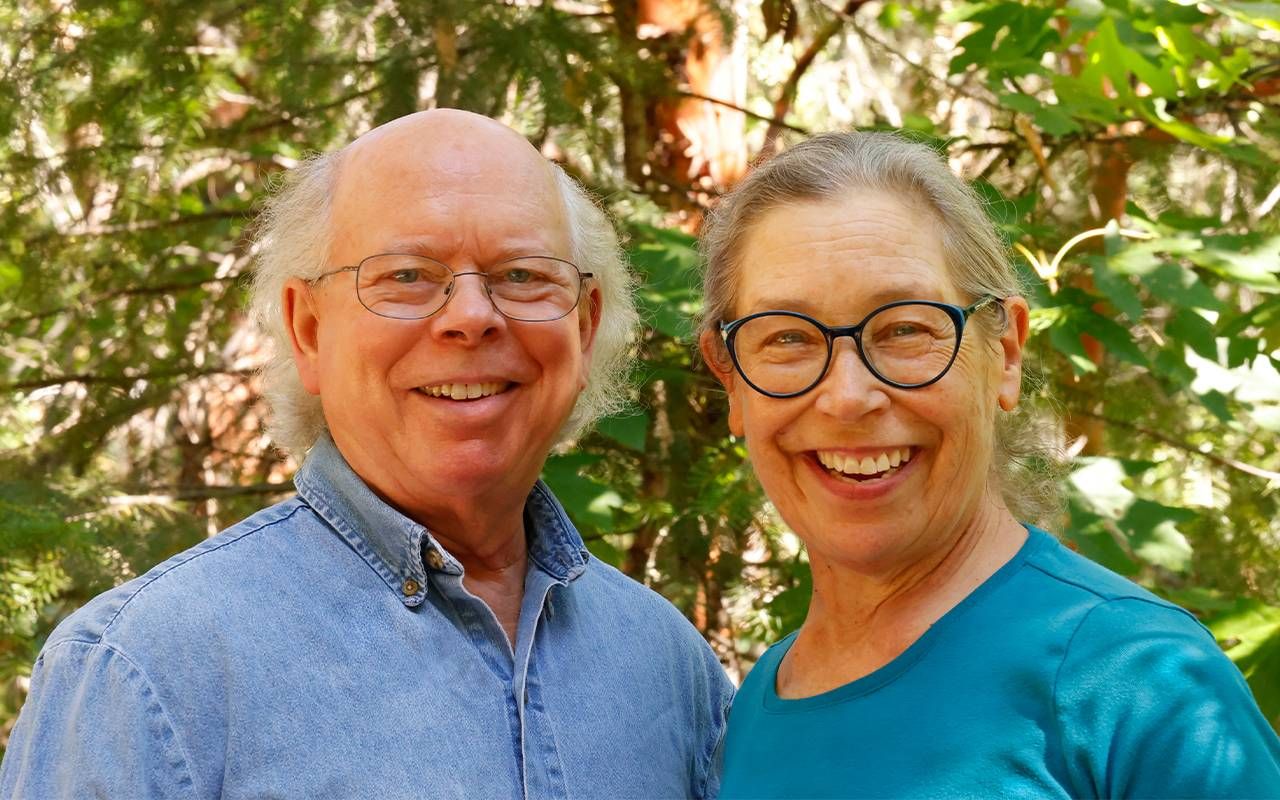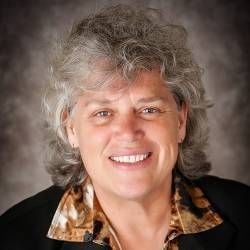Quitting the City to Restore a Forest
Taking up golf, volunteering at a food bank or traveling abroad were not enough for this adventurous couple
Restoring a forest isn't usually a project people take on when they're in their 60s. But when Southern Oregon's natural beauty hooked San Francisco urbanites Fred Gebhart and Maxine Cass they decided to abandon city life and take on the challenge.

In 2010, the couple inherited 20 mostly wooded acres from Gebhart's mother. Knowing that the house on the property needed repairs, they went to inspect. When the sun woke them the next morning, it pointed them to a new life direction.
"We groggily got up and looked outside," said Gebhart. "It was early June and we saw a beautiful green meadow. Wildflowers. Oaks were freshly in leaf. Everything was bright and shiny. The sun was coming through a pair of table rocks with a snow-capped Cascade mountain in the background. Our mouths just dropped."
Instantly, they both thought of relocating there. "Can we do this?" he recalled saying. "How would we do this?"
Taking Stock and Making the Move
The couple took stock of their resources and what they'd need to be able to live on the property. With an existing DSL line, Gebhart could continue his work as a medical writer remotely. Cass had already retired from travel writing and photography.
"We couldn't get to some parts of the forest ... We had to bushwhack to get into the back woods."
For both, their age was an obstacle to changing health insurance plans. But the Affordable Care Act opened that door, allowing them to set early 2014 as their move date.
In the meantime, they planned to travel to their land every few weeks and learn all they could about home repair and the plants, animals and weather there.
As they got to know the property, they found they owned a 20-acre tangle of trees, blackberry brambles, 12 to 14 feet tall Scotch Broom shrubs and poison oak running up 100-foot trees.
"We couldn't get to some parts of the forest," said Cass. "You couldn't see what was there. You could sort of see your way through overgrown logging roads and paths previous owners had built but we had to bushwhack to get into the back woods."
Eventually, they realized they had not just one but two forests, one hardwood and the other mixed conifer.
The buildings also showed the effects of delayed maintenance. More than they knew. And more than they knew how to fix. As urban renters for 33 years, "we didn't have a clue," Gebhart said, smiling at the memory. "We were so unprepared we didn't even know what questions to ask."
An Expensive Education
They discovered the house needed a new roof, electrical system and paint inside and out. The septic system was clogged, two wells and a cistern pump had to be replaced, and three outbuildings were not salvageable. Gebhart came home one day and told Cass, "I have two words for you. Wells and septic."
"We have wells?" Cass asked.
"Yes, but nobody knows if it's one, two or three."
"What's a septic?" she asked.
Fond Memories but No Skills
Having lived his early childhood in the Ozarks, Gebhart said he had "fond memories of outhouses" but no knowledge of plumbing. The couple's two years in the Peace Corps in Senegal in the late 1970s offered no help either. They had taught English and French.
"In cities, whether water, sewer and electricity worked or not, it wasn't our problem to repair it," said Gebhart. "We discovered in the country there's no one to call. We got to fix all of that stuff."
"If not for Oregon State [University] Extension and Google we'd have been lost," said Cass. "We sucked up information and went from there."
"Family Forest" Stewardship
Cass and Gebhart are two of the nearly 10 million "family forest" owners in the U.S. According to the Family Forest Research Center, a family forest can be as little as one acre with at least 10% trees owned by an individual, family or unincorporated group.
In fact, family forests make up the largest percentage of American forest land. In total, they cover more acreage than all of the national forests combined.
Brett J. Butler, co-director of the Family Forest Research Center and author of "America's Family Forest Owners," says these individual owners' collective decisions will influence the fate of America's forest ecosystem.
Even so, most family forest owners have no stewardship plan nor have they consulted professional forest managers for advice. Some may not even know help is available.
Asking Experts for Advice
For Gebhart and Cass, assistance came from the Oregon Forestry Department and the local soil and water district. Working with these entities, they developed a 10-year forest stewardship plan.
With an approved, written plan they qualified for a multi-year cost-share grant as well as direct contributions. For example, a forestry crew brought a massive chipper and spent two days cleaning up dead trees, returning the wood's nutrients to the forest rather than hauling them away.
Most of the work, though, is DIY. Propagating and planting native shrubs, caging new plants to protect them from grazing deer, seeding native wildflowers and tree-thinning, limbing and pruning, Cass and Gebhart share the load.
To avoid using fire or chemicals to control weeds, they cut and hand-pull all unwanted plants. "We're legendary weed-pullers," said Cass, concluding a story about clearing an acre of weeds by hand.
A Photographer's Paradise
"It was six years before we could even see the whole twenty acres," said Gebhart. Now you can see all way through to the edges. Flowers grow in the forest where there were none. Trees are trimmed with six to eight feet of clearance for walking under.
"The wildlife here is striking."
Their biggest surprise is the variety of trees, at least 11 where three or four was expected. "People don't believe it," said Cass. But visitors have seen it for themselves. While Gebhart and Cass participate in virtual classes and take field trips to other restoration projects, they also host groups for what they call "walkabouts."
For Cass, their land is a photographer's paradise. "The wildlife here is striking," she said. "We don't have any window coverings − not something you can do in the city. We pay attention to what's going on outside, whether it's animals, what the trees are doing, what the weather's doing."
One day a herd of Roosevelt elk appeared outside her bedroom window. Photographers know you don't shoot through glass, but you don't step in front of elk, either. Cass spent an hour and a half watching and photographing.
With delight at the unexpected, she saw skimmer dragonflies land on their truck bed and battle for territory. "I got great action shots of them coming at each other," she said.
Perspective and Attitude
Gebhart marvels at his new perspective on the natural environment. In an urban setting, he said, you might see birds, rats or squirrels, but few other animals, and their behavior is influenced by "human rhythms."
"In rural areas, it's reversed," he said. There's a "rich variety" of wildlife and "it's not our space. We're much more co-inhabitants. It's a very different outlook to realize we need to fit in with their world instead of ordering it specifically for what we need."
Not everyone shares the couple's attitude about living in such a remote area. Some think it would be "inconvenient," "daunting" or "overwhelming," said Cass. "I tell people it's an adventure. It's a big pain sometimes to come out in all weather and do what we're doing."
A Decade-Long Adventure
"But it's also a privilege," she added. "I get to see things others don't and photograph and absorb it. Seeing a big leaf maple for the first time, it's whoa! Like a five-year-old kid. It puts you in a positive state of mind and helps you face challenges. You're not pushed down by it. After ten years, it's still an adventure."
Where some see boredom, Gebhart and Cass see opportunity. "Everything is so new, there's always something to learn or discover or figure out," said Gebhart.
Cass has become a Master Gardener, and both completed Master Food Preserver, Land Stewards and Master Woodland Managers programs and the Citizens Fire Academy — all through OSU Extension.
"Who has time to be bored?" Gebhart said. "We've been learning a whole new way of life."


